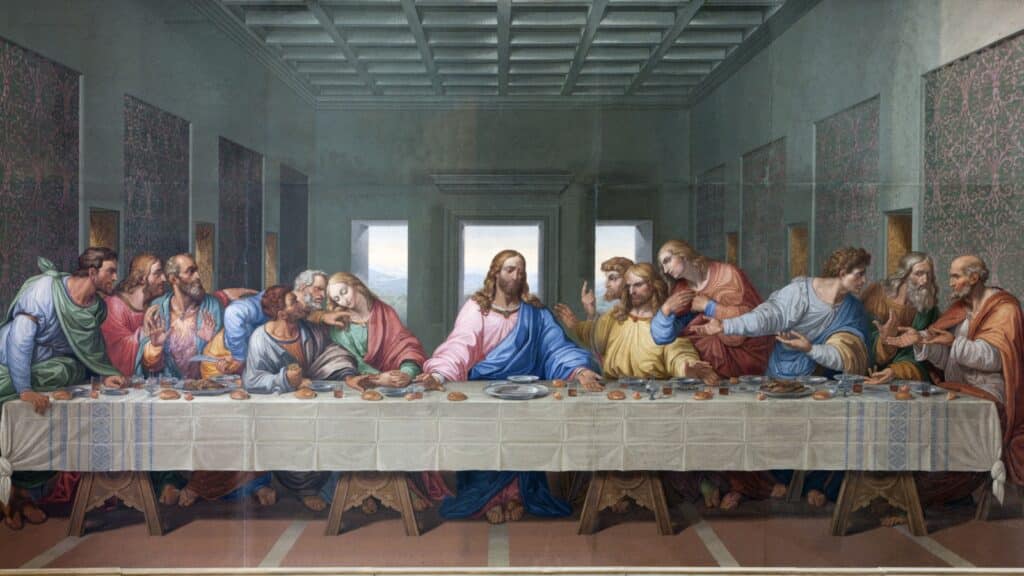Behind every brushstroke, some of history’s most famous artists were sneaking in the shade, dirty jokes, and downright scandals.
These masterpieces are anything but innocent. Once you know what’s really hiding in them, you’ll never look at “fine art” the same way again.
Van Eyck’s “Arnolfini Portrait” Has a Mirror of Mystery
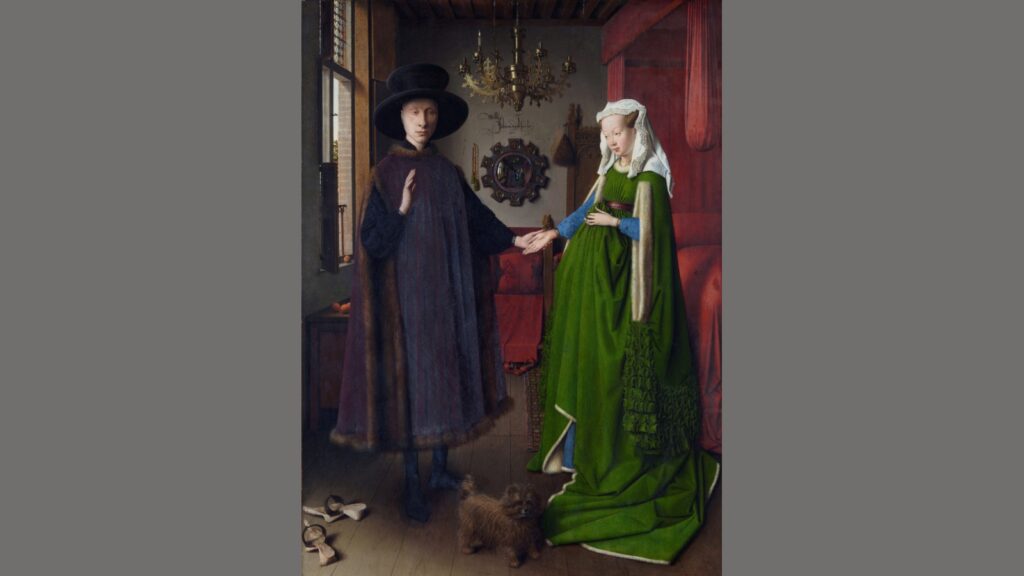
This 1434 wedding painting is essentially a medieval “spot the difference.” Pay attention and you will notice a convex mirror in the background with two additional people entering the room—most likely the artist himself and a witness. And that chandelier has one burning candle—symbolizing life. Or perhaps death? Either way, Van Eyck was not creating just a cute couple shot.
Hans Holbein’s “The Ambassadors” Features a Distorted Skull
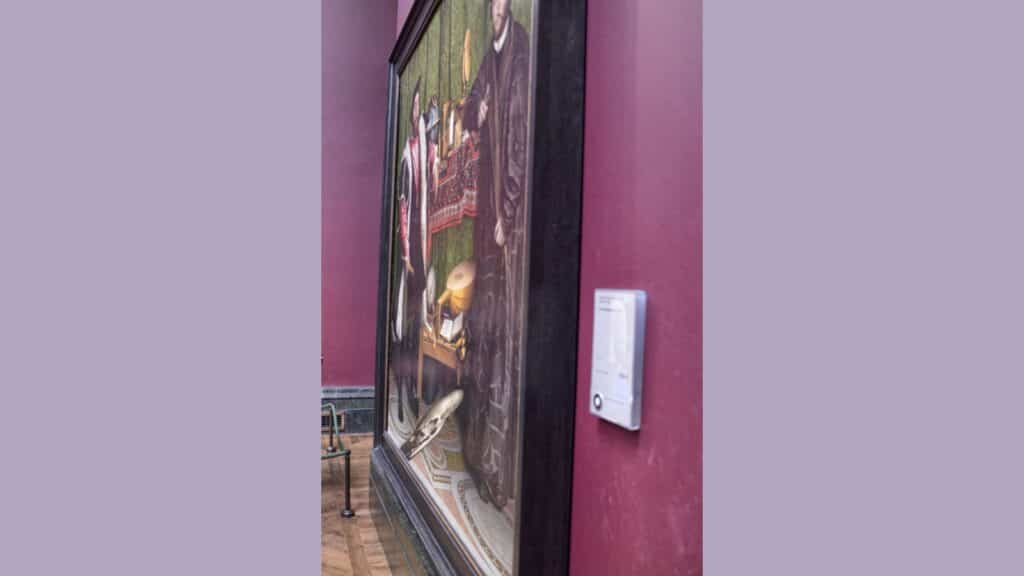
At first sight, this painting is simply two dudes with some fancy stuff. But if you look to the side and angle your head and boom— a creepy skull appears. It’s a timeless “memento mori,” or a reminder of death. Essentially Holbein’s way of saying, “Have your riches… but don’t forget that you are gonna be dead.”
Da Vinci’s “The Last Supper” Hides Musical Notes in the Bread
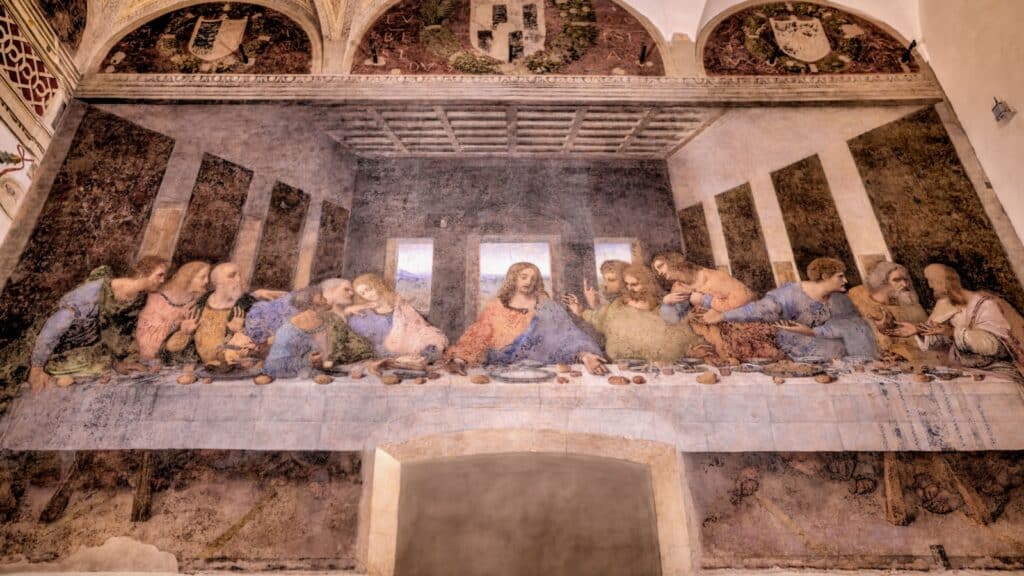
Leave it to Da Vinci to embed an entire musical composition in Jesus’ final dinner party. Some say the placement of the hands and bread loaves in The Last Supper constitutes real musical notes—a full-fledged sacred melody read right to left. It’s essentially the original hidden track (argued to be a fine 40-second one), invented centuries before Spotify. Was Da Vinci just showing off? You bet.
Botticelli’s “Primavera” Has A Lot of Fertility Symbols
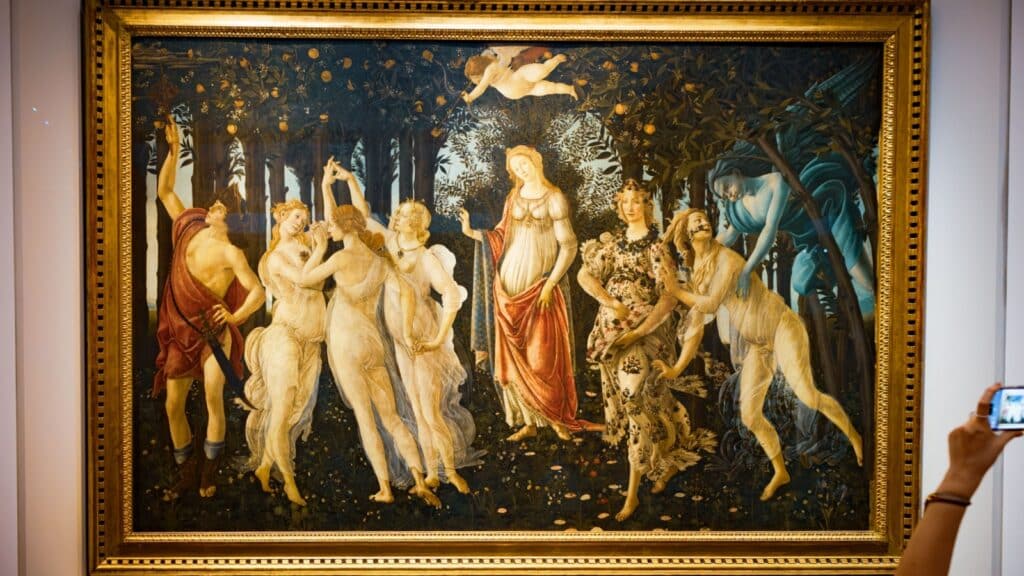
What appears to be an ethereal springtime scene is really an undercover “intimacy education” lesson from the 1400s. All the flowers in Primavera are connected to fertility, blooming ovaries, or baby-making vibes. Flora’s gown? Adorned with hundreds of them. The characters are even representative of the cycle of love and lust. Botticelli transformed mythology into one steamy garden of symbolism.
Michelangelo’s “The Creation of Adam” Hides a Human Brain

Take a close look at what surrounds God—it’s anatomically the same shape as a human brain. Seriously. Scholars are guessing that because Michelangelo was anatomically obsessed, he was perhaps making a bold statement: God gave man intelligence. Or perhaps he was trolling the Church. Either way, that’s not just clouds—that’s the cortex.
Hieronymus Bosch’s “Garden of Earthly Delights” Has A Butt Song
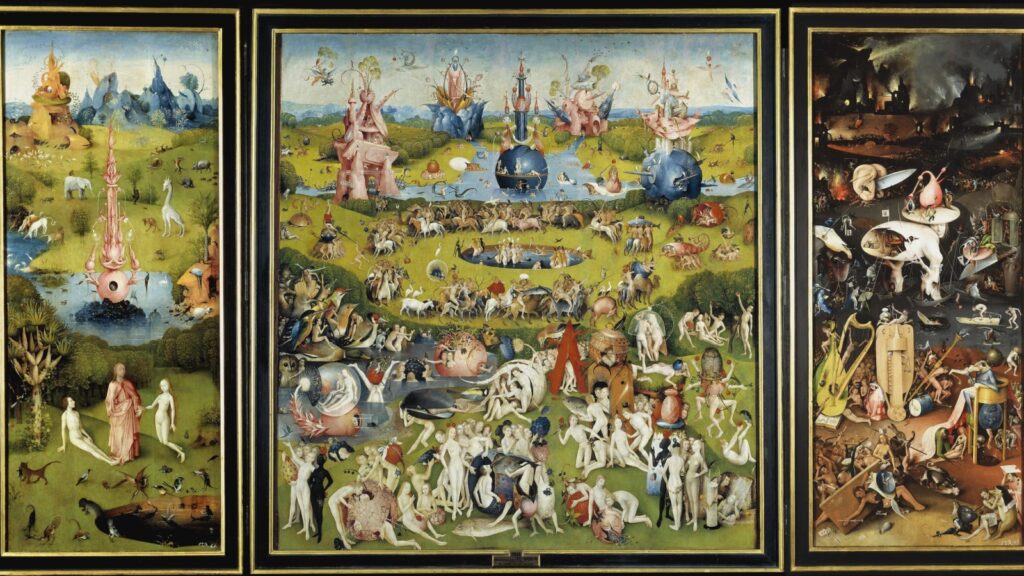
Bosch was out of his mind in the best sense. His trippy triptych is rife with birthday suits, sin, and odd creatures—but tucked away in the corner of Hell corner is… musical notes written on a guy’s butt. Yes, somebody actually notated the “butt music” into an actual composition that can be heard online today.
Da Vinci’s “Mona Lisa” Has Hidden Letters in Her Eyes
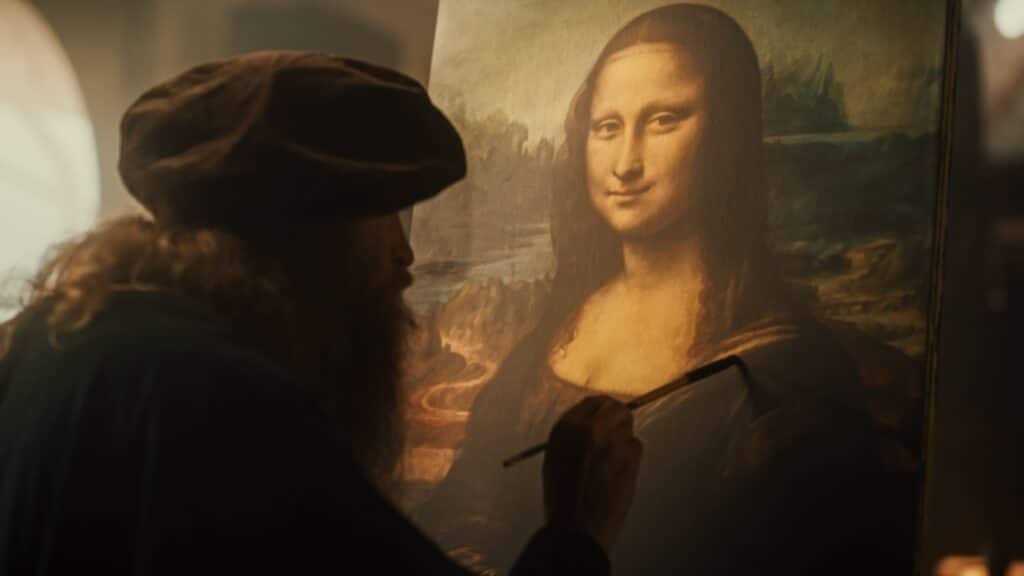
You thought the smile of the Mona Lisa was cryptic? Look into her eyes dude. Researchers using high-resolution scans say they’ve found microscopic letters and numerals in her eyes—”LV” (Leonardo’s initials) and possibly even codes. Coincidence or Da Vinci’s way of trolling everyone for centuries? Either way, that girl is holding something back.
Grant Wood’s “American Gothic” Is Not What You Think
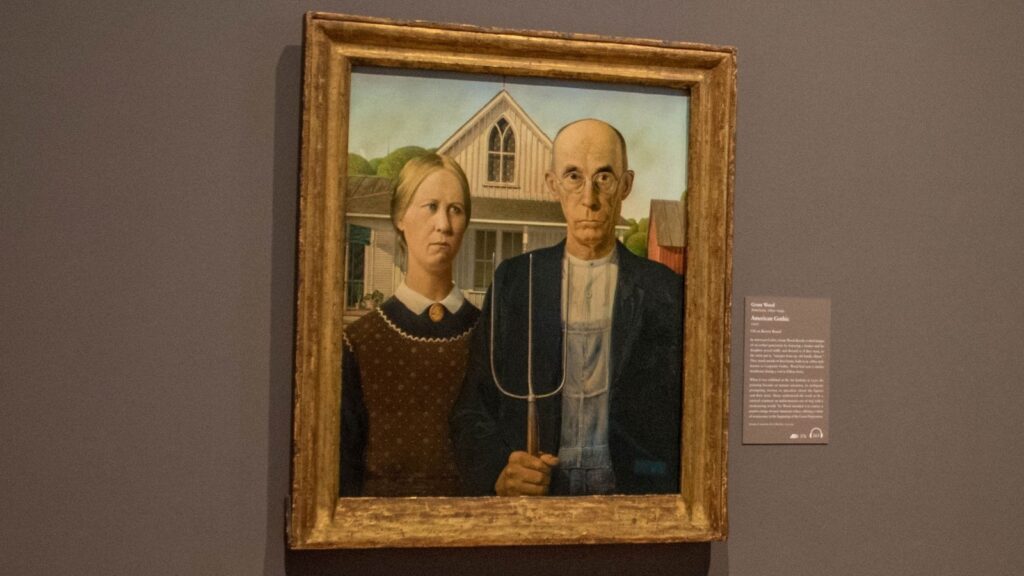
Everyone assumes that this famous painting’s man and woman are husband and wife—nope. Actually, the man was Wood’s dentist, and the woman was his sister. And what about that pitchfork? Some interpret it as a symbol of working hard but some see it as a boundary or even a threat. Symbolism alert: it’s all about rural strength and rigidity. Instantly, it’s less romantic and a lot scarier.
Michelangelo’s “Separation of Light from Darkness” Has A Human Spine

Michelangelo was definitely not a fan of the church, and he concealed anatomy lessons in plain sight. God’s suspiciously spine-like neck in one panel of the Sistine Chapel might be an indication that enlightenment and knowledge are not to be found in the heavens but within. This was painted on a ceiling in a church. Iconic rebellion.
Rembrandt Hid Faces in the Shadows
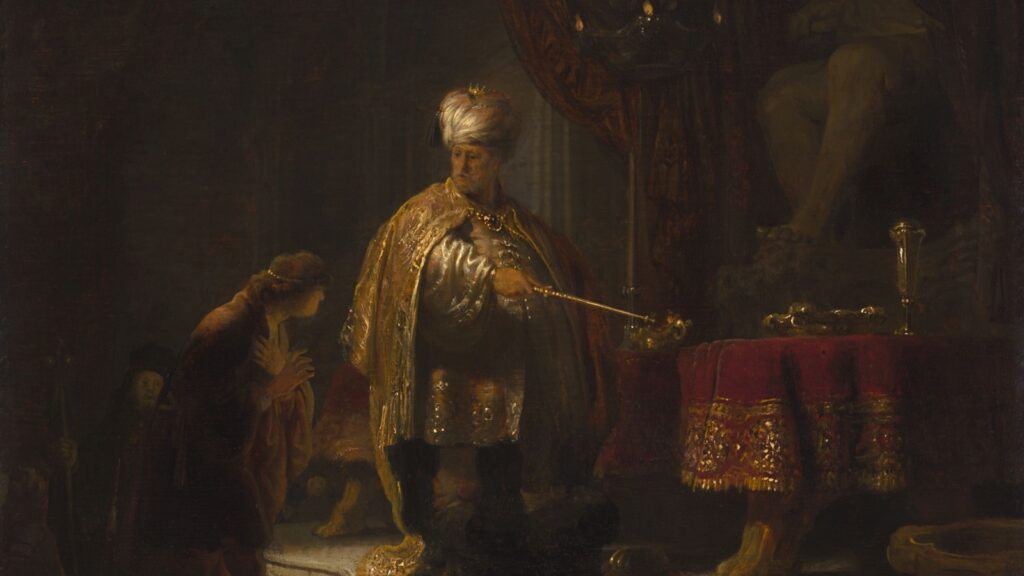
In several of his darker paintings, Rembrandt included barely visible faces and figures in the shadows. They’re not ghosts—they’re narrative clues. Like hidden characters whispering secrets. Creepy? Yes. But also genius-level subtle.
Diego Rivera Roasted Rockefeller in His Mural
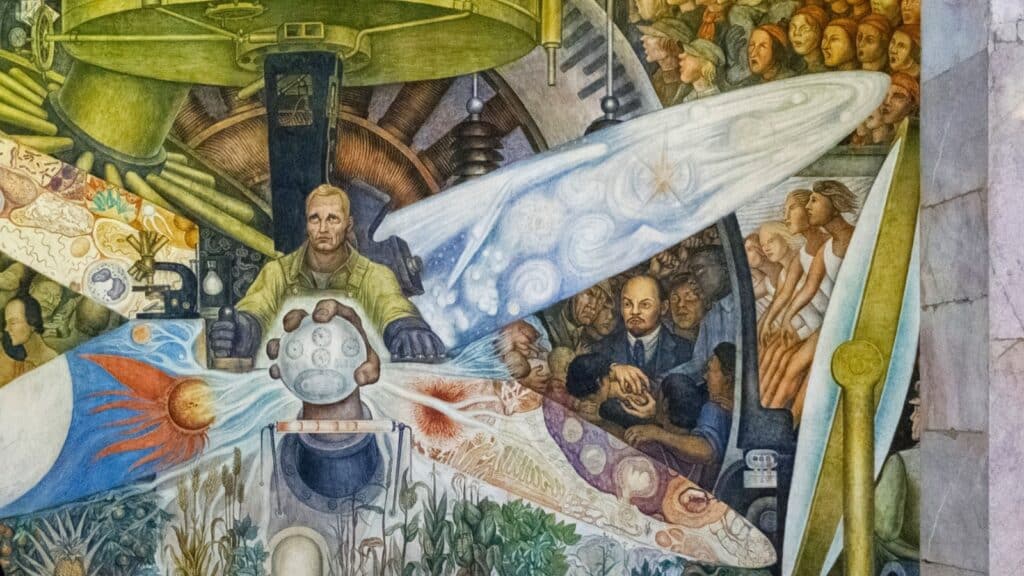
Rivera’s mural in Rockefeller Center was commissioned to celebrate capitalism. He painted Lenin’s face into it instead. Yes—Lenin. Rockefeller lost it and had it destroyed, but the point was made: Rivera was not here to get along. That is revolutionary trolling in daylight.
Picasso Painted an Image of a Bull in “Guernica”

Take a close look: The distorted lines and jagged edges in Guernica spell out a massive bull, an emblem of Spanish pride. It was not only that Picasso painted the horrors of war—he managed to sneak in a silent scream of resistance, layered under the violence.
Jan van Eyck Signed His Work in Latin
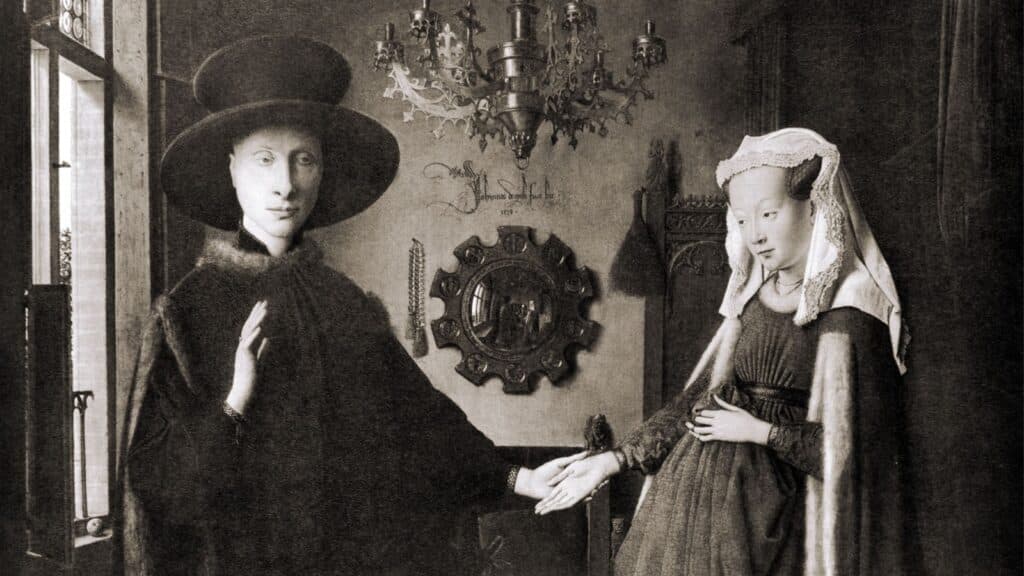
In The Arnolfini Portrait, on top of the mirror, van Eyck scribbled: “Jan van Eyck was here.” No joke. The artist went ahead and autographed his magnum opus like graffiti. Art flexes were apparently a thing even back in 1434.
Van Gogh’s “Starry Night” Accurately Represents Atmospheric Turbulence
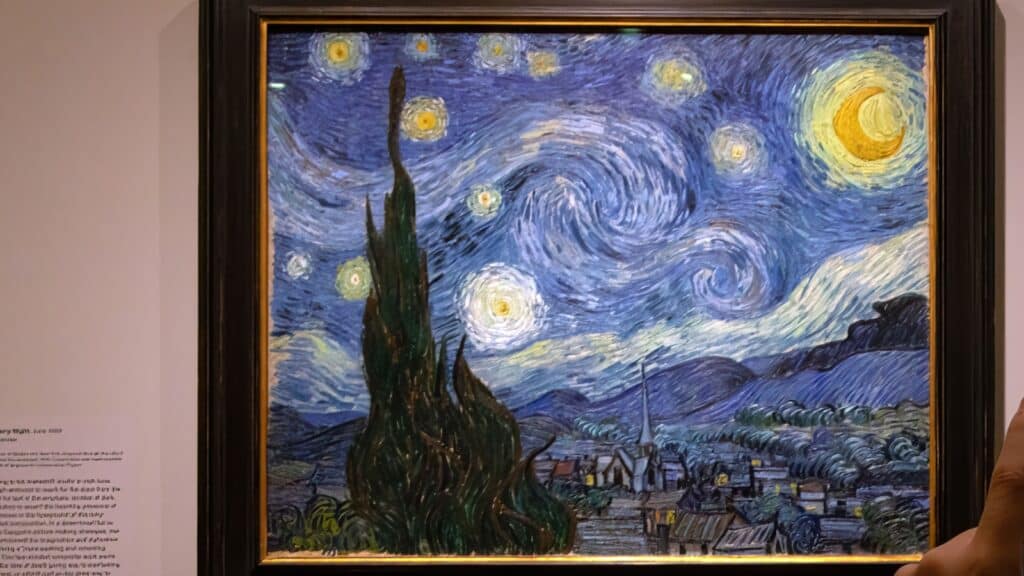
Van Gogh painted Starry Night out of the window of his asylum, but those crazy swirling skies? They precisely illustrate turbulent flow—a pattern of fluid dynamics known to scientists only decades after his painting. Some believe Van Gogh instinctively captured cosmic chaos, blending his inner storms with universal patterns.
Caravaggio’s “Bacchus” Has A Miniature Self-Portrait in a Wine Jug
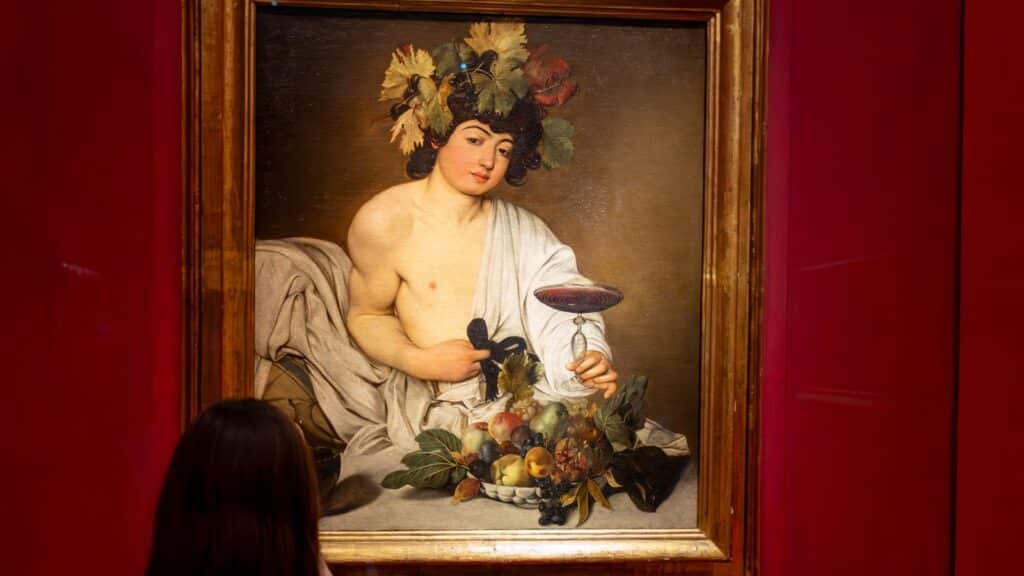
In Caravaggio’s 1595 painting Bacchus, there is a small but interesting element in the glass carafe of wine. A small reflection near the carafe contains what is thought to be a self-portrait of Caravaggio himself with a paintbrush in hand. This hidden picture was discovered during a restoration process in 1922, demonstrating the artist’s tendency to include personal touches within his work.
Preposterous But True Stories From History You’ve Probably Never Heard

History books don’t tell you everything. Sure, they might have taught you the basics, but let’s face it – they left out the real good stuff. The past is full of bizarre stories, they seem too wild to be true. Get ready to have your mind blown with 15 unbelievable – but – true stories from history.
Preposterous But True Stories From History You’ve Probably Never Heard
21 Urban Legends You Probably Believed as a Kid

Ghost cars, chomping chewing gum that explodes – these myths had us looking over our shoulders, staying away from cracks, and sleeping with the lights on. Ready to return for the urban legends that we swore were real?
21 Urban Legends You Probably Believed as a Kid

